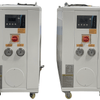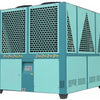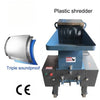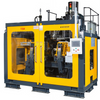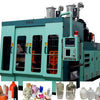Advancements in Air-Cooled Chiller Technology: Design, Applications, and Sustainability in Modern Industrial Cooling
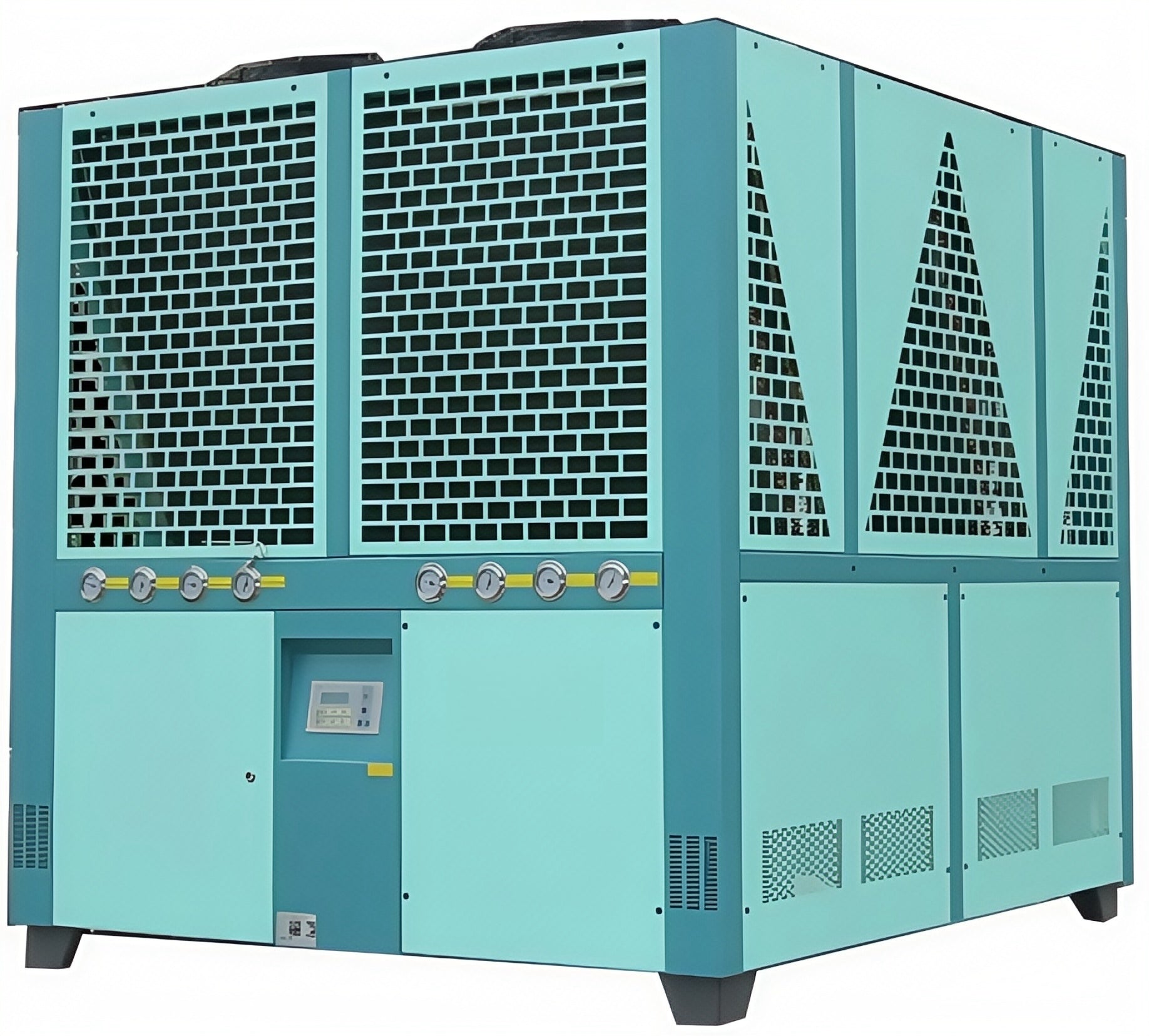
1. Introduction
With global industrial energy consumption rising and water resources becoming increasingly constrained, the demand for efficient, low-maintenance, and environmentally responsible cooling solutions has intensified. Air-cooled chillers—also known as air-cooled industrial chillers or air-cooled box-type chillers—offer a compelling alternative to traditional water-cooled systems by eliminating the need for cooling towers, water treatment, and complex piping networks [2][5].
Widely deployed in plastics processing, laser equipment, data centers, pharmaceuticals, food & beverage, and chemical manufacturing, air-cooled chillers provide precise temperature control (typically 5–35°C, with specialized units reaching –15°C using glycol mixtures) while maintaining operational simplicity [2][7]. Recent technological advances, particularly in China, have further enhanced their energy efficiency, reliability, and integration with smart manufacturing ecosystems [8].
2. System Architecture and Thermodynamic Principles
An air-cooled chiller operates on the vapor-compression refrigeration cycle, comprising four core components:
- Compressor: The heart of the system. Modern units employ scroll, screw, or centrifugal compressors. High-end models (e.g., oil-free magnetic bearing centrifugal compressors) achieve COPs > 6.0 with minimal maintenance [3].
- Air-Cooled Condenser: Features hydrophilic aluminum finned coils and low-noise axial fans to maximize heat rejection to ambient air. The condenser’s heat transfer temperature difference is typically 8–15°C—higher than water-cooled systems but acceptable in moderate climates [5].
- Expansion Device: Either a capillary tube (for small units) or a thermostatic expansion valve (TXV) (for larger, variable-load systems) to regulate refrigerant flow [6].
- Evaporator: Commonly shell-and-tube or tank-type, where chilled water absorbs heat from the process fluid [6].
The cycle begins when the compressor pressurizes low-pressure refrigerant vapor into a high-temperature, high-pressure gas. This gas releases heat in the condenser, condensing into liquid. After expansion, the low-pressure liquid absorbs heat in the evaporator, completing the loop [7].
3. Key Technical Features and Performance Metrics
Modern air-cooled chillers incorporate several advanced features:
- Mobility: Units are mounted on casters for easy relocation (e.g., patent CN219323995 [1]).
- Self-Cleaning Filtration: Integrated filter cleaning mechanisms with retractable brushes and scraper plates prevent dust and fiber accumulation on condenser fins, maintaining heat transfer efficiency over time [1].
- Control Systems: PLC or microprocessor-based controllers with phase sequence protection, high/low pressure cut-offs, anti-freeze functions, and optional remote monitoring via IoT [2][8].
- Refrigerants: While R22 was historically common, newer models use R407C, R32, or R290 to comply with environmental regulations (e.g., China’s “Dual Carbon” policy). By 2030, low-GWP refrigerant adoption is projected to exceed 65% [8].
- Energy Efficiency: COP values range from 2.8 to 6.5, depending on load, ambient temperature, and compressor type. Oil-free centrifugal models achieve the highest efficiency [3].
Typical specifications for mid-range units (e.g., NWS series [6]):
- Cooling capacity: 3–50 RT (10–175 kW)
- Power supply: 380V/3-phase/50Hz
- Built-in water tank: 50–780 L
- Noise level: 65–78 dB(A)
4. Market Trends and Regional Focus: China
China dominates global air-cooled chiller production and innovation. According to industry reports [8]:
- The air-cooled screw chiller market in China is projected to grow at a CAGR of 12.5% from 2025 to 2030, reaching ¥45 billion (~$6.2B) by 2030.
- Key application sectors: food processing (35%), chemical industry (28%), and data centers (22%)—the fastest-growing segment due to AI and cloud computing expansion.
- Leading domestic manufacturers include Midea, Haier, TICA, and Bixen Energy, competing with global players like Carrier, Trane, and Daikin [3].
- Government policies (e.g., “Dual Carbon” targets, energy efficiency subsidies) incentivize adoption of high-COP, low-emission chillers, with tax incentives up to 15% for qualifying models [8].
A notable case study is the deployment of large air-cooled screw chillers in Inner Mongolia’s hydrogen production facilities, where arid climate, low ambient temperatures (annual avg. 0.8°C), and water scarcity make air-cooled systems the optimal choice [5].
5. Environmental and Operational Advantages
Advantages [2][5]:
- Zero water consumption: Eliminates water waste, scaling, and biofouling risks.
- Simplified installation: No cooling towers, pumps, or water treatment systems.
- Lower maintenance costs: Fewer components and no water chemistry management.
- Modularity: Suitable for rooftop, outdoor, or temporary installations.
Limitations:
- Higher condensing temperatures reduce efficiency in hot climates (>35°C ambient).
- Noise emissions may require acoustic enclosures in urban settings.
- Larger footprint compared to water-cooled units of equivalent capacity.
Despite these, lifecycle cost analyses often favor air-cooled systems in regions with high water costs or regulatory restrictions [5].
6. Future Directions
Emerging trends shaping the next generation of air-cooled chillers include:
- Oil-free magnetic bearing compressors: Enable maintenance-free, high-speed operation with 30% lower energy use [3].
- AI-driven predictive control: Real-time load matching and fault prediction via machine learning.
- Hybrid cooling modes: Integration with evaporative pre-cooling for hot climates.
- Standardization and modularity: Plug-and-play units for rapid deployment in modular data centers or pop-up factories.
- Circular design: Use of recyclable materials and refrigerant recovery systems.
As global building codes (e.g., IECC 2021) tighten efficiency requirements, air-cooled chillers must continue evolving to meet stringent Mechanical Load Component (MLC) limits—particularly in data center applications [9].
7. Conclusion
Air-cooled chillers represent a mature yet dynamically evolving technology at the intersection of industrial efficiency, resource conservation, and climate resilience. Driven by innovations in compressor design, intelligent control, and sustainable refrigerants—and supported by strong policy frameworks in markets like China—they are well-positioned to meet the cooling demands of a decarbonizing world. Future success will depend on balancing performance, environmental impact, and adaptability across diverse climatic and industrial contexts.
-
Posted in
Industrial chiller

